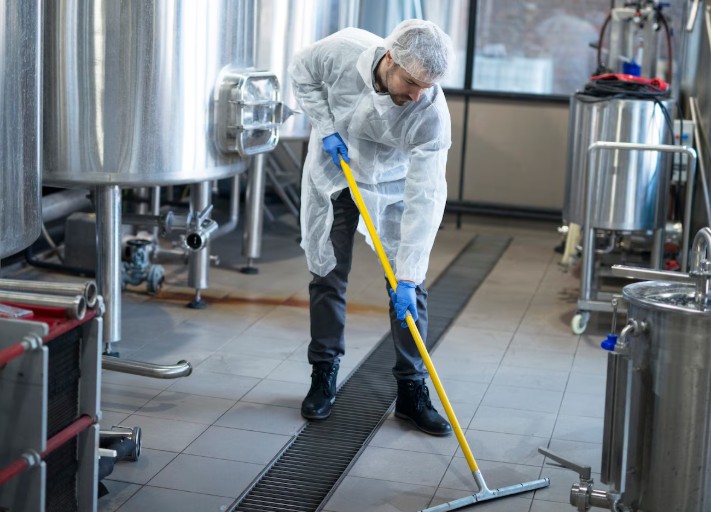If your business is relocating, closing, or completing a lease, there is one essential task that must be done before handing over the keys, a commercial strip-out. Many property owners and tenants are unaware of how much work goes into returning a space to its original condition. Whether it is a shop, office, or hospitality venue, a strip-out ensures the premises are cleared of all internal fixtures and fittings as required by your lease.
To make the process simple, many businesses choose to work with contractors who specialise in commercial strip-out services. These professionals handle everything from internal demolition to rubbish removal, helping you meet your make-good obligations and avoid disputes with the landlord.
If you are preparing to vacate a commercial property, here is what you need to know.
What Is a Commercial Strip-Out?
A commercial strip-out is the removal of all non-structural internal elements from a commercial property. This process returns the space to a base, often referred to as “shell and core” or “warm shell” condition. The exact scope depends on the lease agreement, but most commercial strip-outs include:
- Removing floor coverings like tiles, carpet, or vinyl
- Dismantling partitions, shelving, or display units
- Removing ceilings, lighting, and air conditioning ducts
- Taking out built-in counters, bars, or cabinetry
- Disconnecting electrical, data, and plumbing fittings
- Clearing branding elements, signage, and window decals
- Responsible disposal of all waste materials
The goal is to leave the property clean, safe, and compliant with the handover terms of the lease.
When Do You Need a Strip-Out?
Commercial strip-outs are most commonly required when:
- Ending a commercial lease that includes a make-good clause
- Renovating or rebranding a retail, office, or hospitality space
- Preparing a tenancy for new occupants
- Converting a space to a different use
- Clearing a site for full redevelopment
In most cases, your lease agreement will outline exactly what needs to be removed and what condition the property must be in. Some landlords require a full strip-out, while others may ask for only partial removals. Either way, the process must be carried out correctly to avoid penalties or legal issues.
Make-Good Clauses Explained
A make-good clause is a standard part of most commercial leases. It outlines the tenant’s responsibility to return the premises to its original condition at the end of the lease. This could mean removing all fit-out items, repainting walls, repairing damage, and cleaning the property thoroughly.
Failing to meet make-good obligations can result in:
- Forfeiting part or all of the bond
- Being billed by the landlord for removal or repairs
- Legal disputes or delays in lease finalisation
This is why engaging professionals who offer demolition services is a smart move. They understand the specific requirements involved in commercial strip-outs and can carry out the work quickly, cleanly, and in line with your lease terms.
What Is the Process?
1. Site Inspection and Quoting
A team will inspect the property and review the lease or make-good obligations. Based on this, a detailed quote and scope of work is provided.
2. Service Disconnection
Power, gas, water, and data services are safely disconnected or isolated as required. This is critical to prevent damage or safety hazards during the strip-out.
3. Removal of Fixtures and Fittings
All agreed-upon items are removed, including flooring, lighting, internal walls, shelving, and equipment.
4. Waste Disposal
Materials are sorted and removed from the site. Responsible teams ensure waste is recycled where possible and disposed of in accordance with council regulations.
5. Site Clean-Up and Final Touches
Once everything is removed, the site is cleaned and prepared for handover or further renovation. In some cases, patching, painting, or floor levelling may also be included to meet lease requirements.
Types of Commercial Properties That Require Strip-Outs
- Retail stores
- Offices
- Restaurants and cafes
- Warehouses
- Clinics and salons
Each of these spaces has unique fit-outs and fixtures that must be removed or reconfigured before lease completion or renovation.
Why You Should Avoid DIY Strip-Outs
While it may be tempting to save money by removing items yourself, commercial strip-outs are more complex than they seem. There are strict regulations around waste disposal, noise control, and safety. Without the right experience, you risk:
- Damaging the property
- Breaching the lease agreement
- Injuring yourself or others
- Delaying the handover
- Creating costly clean-up issues later
Professional teams not only have the tools and licences needed, they also know how to get the job done efficiently and with minimal disruption.
How to Choose the Right Contractor
When hiring a team for a commercial strip-out, consider the following:
- Are they experienced in your type of property?
- Do they handle everything from disconnection to waste removal?
- Can they meet your deadlines and coordinate around other trades?
- Do they understand make-good obligations and council regulations?
- Are they licensed, insured, and safety compliant?
Look for a team that offers clear quotes, communicates throughout the job, and ensures the site is returned in the condition required by your lease.
Final Thoughts
A commercial strip-out is more than just removing furniture and fixtures, it is a critical part of ending a lease or preparing a property for its next use. Done properly, it protects your bond, meets your legal obligations, and leaves the space clean and ready for whatever comes next.
If you are planning to vacate a commercial tenancy, working with professionals who specialise in commercial strip-out services ensures everything is removed safely, legally, and on time. It is one less thing to worry about during a busy business transition.
Want to know more? Just head to our website!

